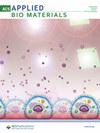Pore unit cell network modeling of the thermal conductivity dynamics in unsaturated sandy soils: Unveiling the role of spanning‐wetting phase cluster
IF 4.6
Q2 MATERIALS SCIENCE, BIOMATERIALS
引用次数: 0
Abstract
As the world struggles with climate change and energy crises, understanding the role of soil in the food–water–energy nexus becomes increasingly critical. Accurately estimating the soil thermal conductivity drying curve is essential for assessing the impacts of temperature on soil biota and crop growth, environmental changes due to forest fires and global warming, and for designing geo‐energy extraction techniques such as geothermal energy piles. Existing empirical models often fail to accurately estimate the soil thermal conductivity (TC), particularly in pendular soil moisture regimes where they do not capture sharp changes in TC. This study introduces a novel approach using a pore unit cell network model to more accurately describe the dynamics of TC in variably saturated soils. A quadratic parallel scheme within each soil pore unit cell links the TCs of solid, water, and air to the overall effective conductivity. By modeling air invasion in the pore network model and employing the proposed equation, we determined the unsaturated soil TC based on varying local conductivities. The model effectively captures the significant decrease in conductivity in the pendular saturation regime, associated with the shrinkage of the spanning‐wetting cluster. Quantitative analyses showed a substantial improvement in prediction accuracy compared to existing models, especially under varying moisture conditions. Our findings have significant implications for better characterizing soil thermal and hydraulic properties, which are crucial for resource management in a changing climate and advancing geo‐energy technologies.非饱和砂土导热动态的孔隙单元网络建模:揭示跨湿相团的作用
随着全球与气候变化和能源危机作斗争,了解土壤在食物-水-能源关系中的作用变得越来越重要。准确估算土壤导热干燥曲线对于评估温度对土壤生物区系和作物生长的影响、森林火灾和全球变暖导致的环境变化以及设计地热能堆等地能提取技术至关重要。现有的经验模型往往无法准确估算土壤导热率(TC),尤其是在土壤水分悬浮状态下,因为这些模型无法捕捉到导热率的急剧变化。本研究介绍了一种使用孔隙单元网络模型的新方法,以更准确地描述变化饱和土壤中的导热系数动态。每个土壤孔隙单元内的二次平行方案将固体、水和空气的 TC 与整体有效电导率联系起来。通过在孔隙网络模型中模拟空气入侵,并采用所提出的方程,我们确定了基于不同局部电导率的非饱和土壤 TC。该模型有效地捕捉到了悬垂饱和状态下电导率的显著下降,这与跨润湿团的收缩有关。定量分析显示,与现有模型相比,该模型的预测精度有了大幅提高,尤其是在不同湿度条件下。我们的研究结果对于更好地描述土壤热和水力特性具有重要意义,这对于在不断变化的气候中进行资源管理和推进地质能源技术至关重要。
本文章由计算机程序翻译,如有差异,请以英文原文为准。
求助全文
约1分钟内获得全文
求助全文

 求助内容:
求助内容: 应助结果提醒方式:
应助结果提醒方式:


